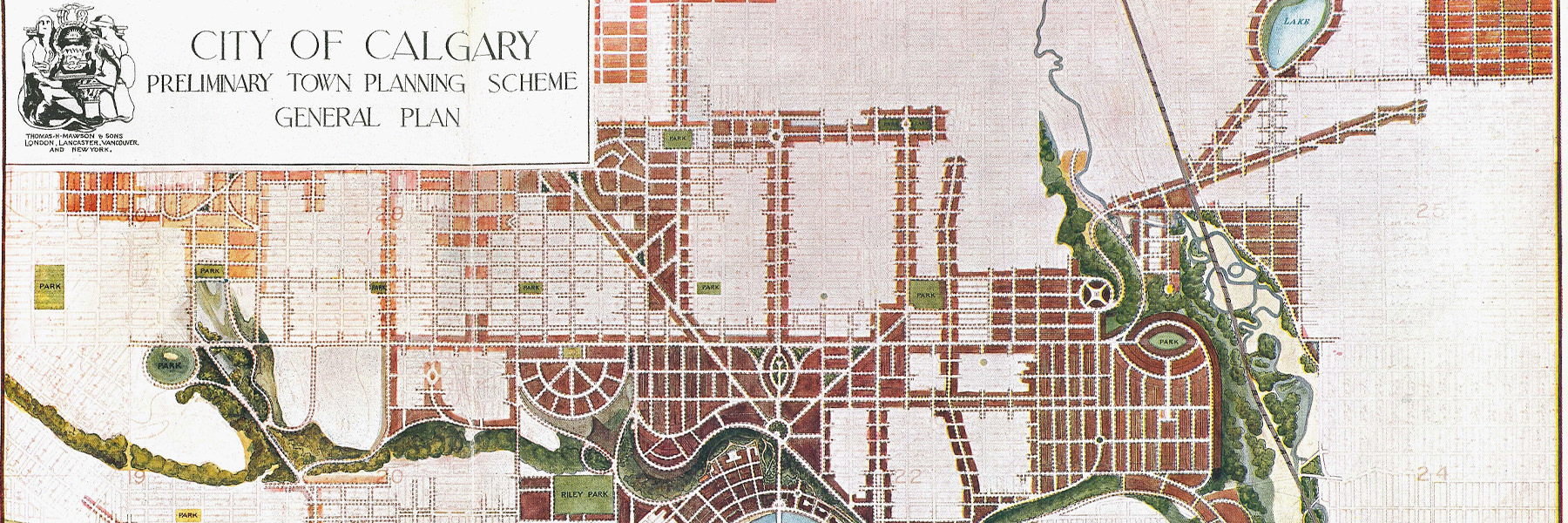
The current state of heritage in Calgary
Calgary’s residential heritage is dwindling and is largely unprotected.
This graph shows a breakdown of our residential heritage assets:
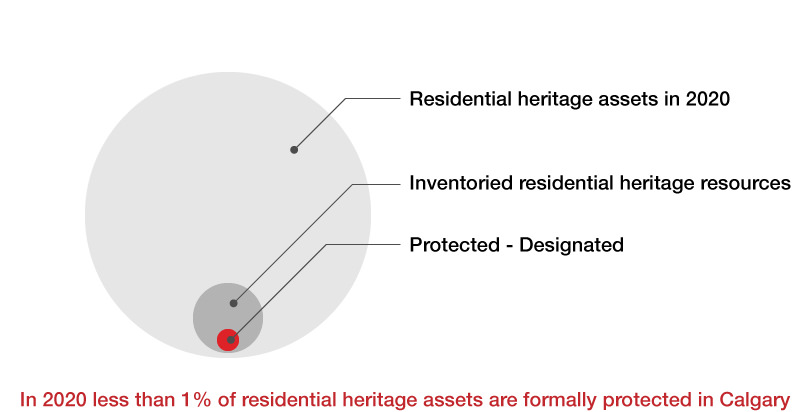
4122 residential heritage assets have been identified by a “Windshield Survey” across 26 Calgary communities in 2019-20. These included everything from individual homes to apartment blocks. As of October 2020, 320 residential properties were listed on Calgary’s Inventory of Evaluated Historic Resources, however, just 10% of these were protected through municipal designation. Happily, many of these properties have been converted to other uses, such as restaurants and shops, making them accessible to all Calgarians. But sadly, 10% of the 320 inventoried residences have already been demolished, despite their documented historical significance.
On a positive note, 500 of the identified heritage assets from the Windshield Survey have been flagged for evaluation. If the evaluation confirms historical significance, these properties could be added to the Inventory. Being added to the Inventory is the first step in the designation process. Only designation can prevent demolition, and in Alberta, designation is really up to the owner.
That’s why stronger area-based policies are needed.
Most of our remaining heritage residences (all types) are clustered within a couple of dozen inner city communities that are under the most pressure for redevelopment and densification. These are highly desirable communities, in large part because of their historic character and mature streetscapes.
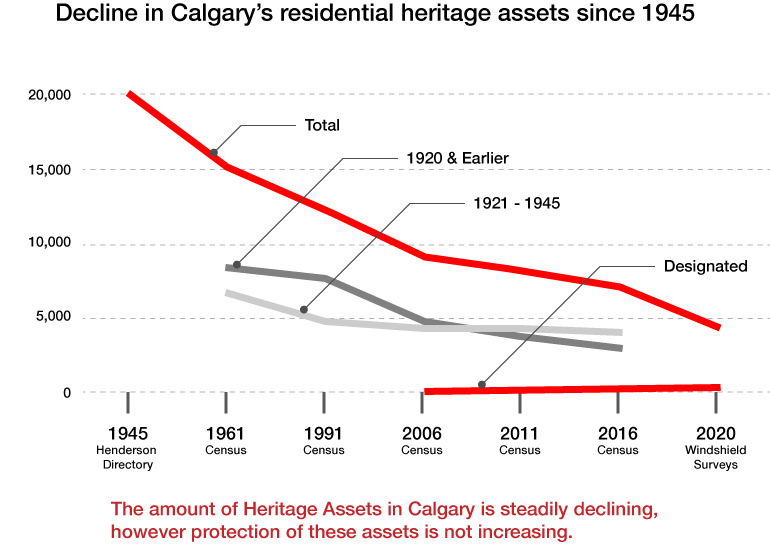
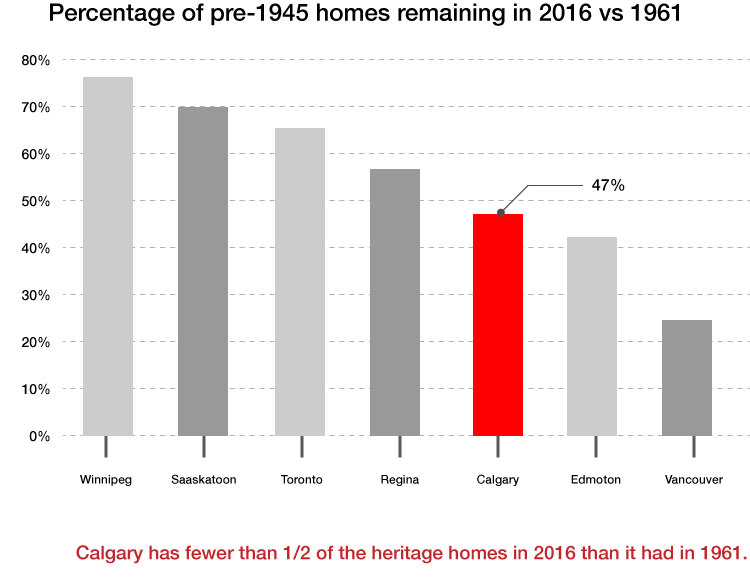
Calgary’s oldest historical housing stock is well worth preserving. In 2016 most of Calgary’s 3925 single-detached homes built in 1920 or earlier were in good repair, with 88% needing only regular maintenance or minor repairs. In the decade between 2006 and 2016, Calgary lost 485 Century-old single detached homes, and the recent windshield survey shows that even more have been lost since then.
Calgary’s Non-Residential Heritage
Data on the status of Calgary’s historical institutions, industrial, and commercial buildings is less available. One way to estimate the rate of loss is by comparing listings from the “Blocks, Buildings, and Apartments” section of the Henderson Directory, to present day. The 1945 Henderson Directory listed 475 buildings in this section. Only 179 remain today, a 62% loss. The Henderson Directory list may not have captured all of the non-residential buildings in 1945 and some of these were residential apartment blocks. Nonetheless, the loss is significant. The fact that over one third of these original buildings remain, is a testament to their longevity.
Another measure of loss is from the Inventory of Evaluated Historic Resources. Of the 549 non-residential heritage resources listed on the inventory, 65 are municipally designated, 49 provincially and 8 nationally. Some properties have multiple levels of designation and some are not buildings (eg, some historic tree plantings are included in the list of evaluated historic resources). About 10% of the non-residential heritage resources on the inventory have been demolished.
Sources: Henderson's Greater Calgary Directory 1945, City of Calgary 2019-20 Heritage Asset Windshield Survey, Statistics Canada 1961, 1991, 2006, 2011, 2016 Census, Inventory of Evaluated Historic Resources, maintained by Heritage Calgary.
Heritage Lost – Click on the collage to view examples of Calgary’s lost heritage
Click to view
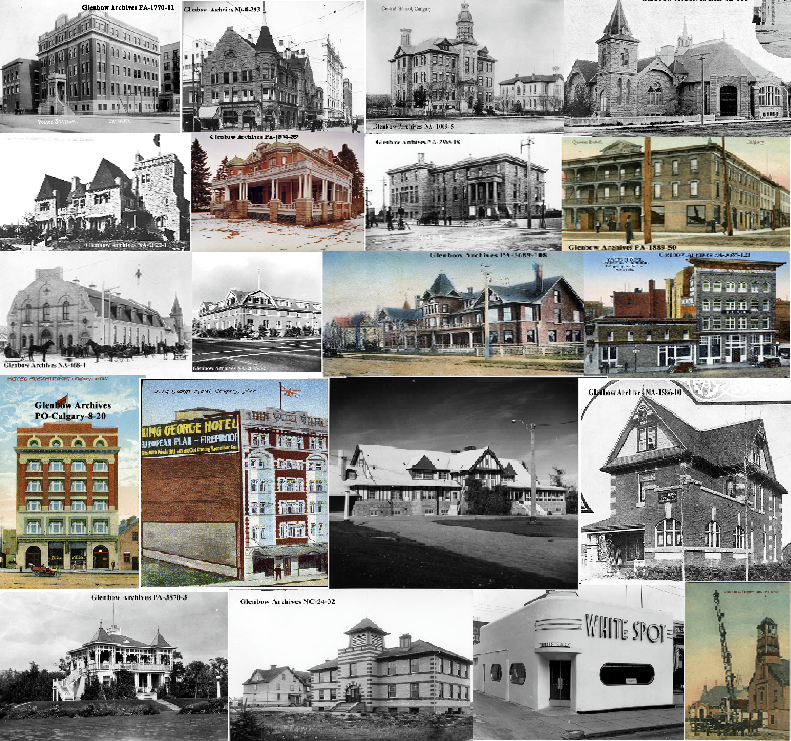
Heritage At Risk
Much of Calgary's remaining heritage is at risk, some from degradation due to neglect, and some face imminent demolition for redevelopment. This video explores some of the sites and streets at risk and also some 'heritage wins' - sites that have been protected through designation.
Update on Hillhurst Baptist Church, March 2021: The church is not legally protected via Bylaw (passed at council) nor legal agreement (tied to Land Use approval). In 2018, a land use amendment with legal protection was negotiated, however it did not proceed. A new Land Use application was successfully appealed in 2022 by community residents.



